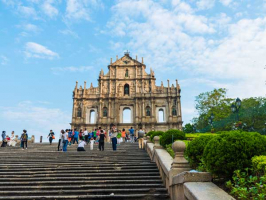Top 7 Most Beautiful Historical Sites in China
From the imperial age through the days of the Communist Party, China has seen millennia of rich and violent history. And remnants from these centuries have ... read more...been kept and restored around the nation at various locations, palaces, and museums. Take a trip to the Terracotta Army in Xian or the Ming Tombs in Beijing to discover more about dynasty China. The Museum of the Chinese Communist Party's First National Congress, on the other hand, is a fantastic place to study China's contemporary history. Here are the most beautiful historical sites in China.
-
The Great Wall of China is one of the world's most impressive structures. It's a protective structure from the past. The "Long Wall" has been around for over 2,300 years. It was constructed in various regions by various states/dynasties to safeguard various territorial borders. It is a UNESCO World Heritage monument that was originally made up of numerous separate defense walls built across China between 476 and 221 BC. The whole Great Wall of China zigzags through northern China's mountains. Hiking along with the Great Wall's best-protected parts, Mutianyu and Jinshanling, is highly recommended.
The Great Wall of China is now the country's most recognized tourist attraction, with portions of the wall visible in numerous locations. The most popular, and hence busiest, are in Bdálng and adjoining Juyongguan, around 70 kilometers from Beijing. This stretch of the Great Wall was constructed during the Ming Dynasty, and despite the fact that most of it have been restored, it is still the most visited piece of the Great Wall.
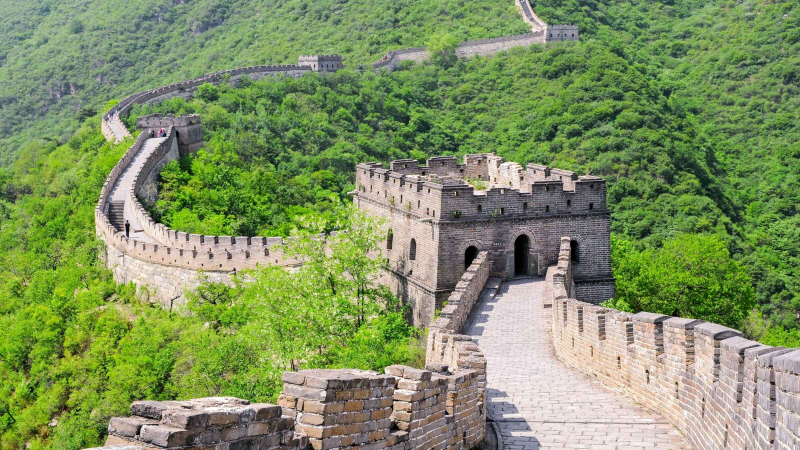
Source: getyourguide -
The Forbidden City, commonly known as the Imperial Royal or the Palace Museum, is a palace complex in Beijing dating from the 15th century. The Forbidden City, which spans 720,000 square meters and is well-preserved, is one of China's most famous tourist destinations and is listed on the UNESCO World Heritage List. Visitors may witness a significant collection of artwork as well as religious and imperial items going back to the seventh century within the Forbidden City Museum. Audio guides are offered for a charge and excursions vary from two hours to a full day. The tour paths are available via a fun little application on the Palace Museum's official website.
The venue is closed on Mondays and can get quite busy during major holidays and celebrations, such as the summer and Chinese New Year. If you have the opportunity, climb the wall for spectacular views of the city. The Imperial Gardens are especially worth visiting because they give much-needed peace, quiet, and refuge from Beijing's rush and bustle. There's a lot to see, including buildings, gardens, museums, gates, walls, and treasures, so plan on spending the entire day exploring this massive and amazing complex.
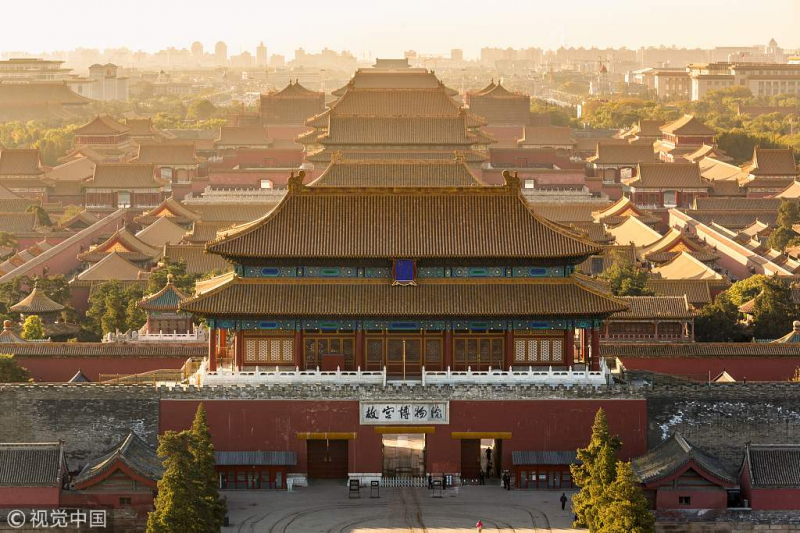
Source: news.cgtn.com -
The Terracotta Army is a group of terracotta figurines portraying Qin Shi Huang, China's first Emperor, and his army. It is a type of funeral art that was buried with the emperor in the years 210–209 BCE with the intention of safeguarding him in the afterlife.
Local farmers in Lintong County, west of Xi'an, Shaanxi, China, unearthed the statues in 1974, which date from the late third century BCE. The figures vary in height according to their responsibilities, with the generals being the tallest. Warriors, chariots, and horses are among the figures. According to 2007 estimates, the Terracotta Army's three pits carried about 8,000 men, 130 chariots with 520 horses, and 150 cavalry horses, the bulk of whom were buried near Qin Shi Huang's tomb. Officials, acrobats, strongmen, and musicians were among the non-military terracotta figurines discovered in other pits.
This must be China's most well-known tourist attraction since it appears in nearly all China-related advertisements and photographs. The clay warriors had been buried underground for nearly 2,000 years until 1974 when a local farmer constructed a well and discovered them. The Terracotta Warriors Museum is a must-see for history buffs. Modern experts are still baffled as to how such a massive endeavor could be completed in 220 BC. The history of the Qin Dynasty and its first emperor, Qin Shihuang, may be found here. You'll note that each clay figure has a different stance, look, and haircut as you tour the tomb. Arrangements can be made for anyone interested in learning how archaeologists repair these figurines in the back background.
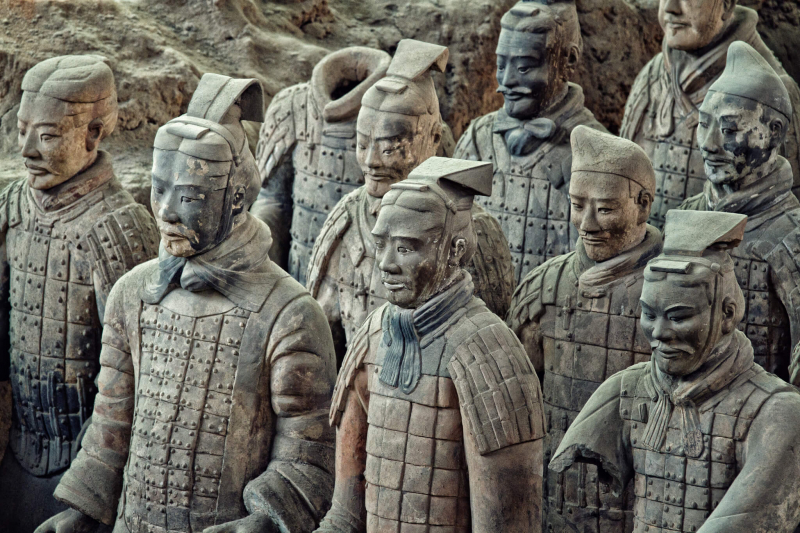
Source: theguideliverpool -
In Lhasa, Tibet, the Potala Palace is a dzong castle. From 1649 to 1959, it was the Dalai Lamas' winter residence; since then, it has been a museum, and since 1994, it has been a UNESCO World Heritage Site. Mount Potalaka, the mythological dwelling of the bodhisattva Avalokitesvara, is the inspiration for the palace. After one of his spiritual counselors, Konchog Chophel (died 1646), pointed out that the site was appropriate as a seat of administration, the 5th Dalai Lama began building in 1645. The Potala Palace, one of the most beautiful historical sites in China, is located between the Drepung and Sera monasteries and the ancient city of Lhasa. It may be erected on top of the ruins of Songtsen Gampo's previous castle, the White or Red Palace, which was built in 637.
The structure is 400 meters east-west and 350 meters north-south, with sloping stone walls approximately 3 meters thick at the base and copper poured into the foundations to help it withstand earthquakes. On top of Marpo Ri, the "Red Hill," thirteen floors of houses with over 1,000 rooms, 10,000 shrines, and nearly 200,000 sculptures tower 117 meters above the valley floor, rising more than 300 meters in all.
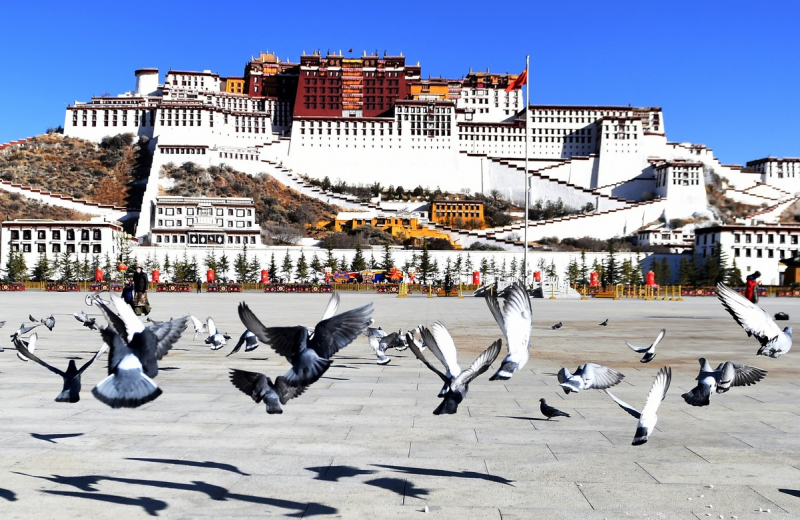
Source: chinadaily -
The Summer Palace, one of the most beautiful historical sites in China, in Beijing is a sprawling complex of lakes, gardens, and palaces. During the Qing period, it served as an imperial garden. Longevity Hill Kunming Lake and the Seventeen Hole Bridge may be found on the inside. It has a surface area of 2.9 square kilometers, with water covering three-quarters of that area. Longevity Hill is around 60 meters tall and contains a series of structures arranged in a logical order. The front hill is brimming with magnificent halls and pavilions, while the rear hill is serene and full of natural beauty. The 2.2-square-kilometer center of Kunming Lake was wholly man-made, and the excavated dirt was utilized to construct Longevity Hill.
The Summer Palace, which was inspired by the gardens of South China, has over 3,000 different Chinese antique structures that contain a collection of over 40,000 different priceless historical treasures from each era. The Summer Palace was added to the UNESCO World Heritage List in December 1998. The Summer Palace was described as "a masterpiece of Chinese landscape garden design, combining natural characteristics such as hills and open water with manmade features including pavilions, halls, palaces, temples, and bridges to make a harmonic ensemble of high aesthetic value." It is also the Central Route terminal of the South-North Water Transfer Project, which has traveled 1,267 kilometers from Danjiangkou Reservoir in Hubei to become Beijing's primary water source.
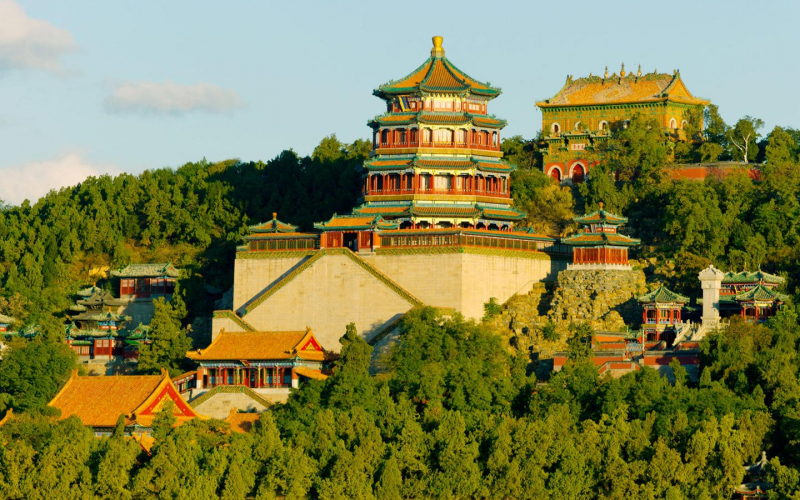
Source: aman.com -
The Mogao Caves, also known as the Thousand Buddha Grottoes or Caves of the Thousand Buddhas, are a complex of 500 temples located 25 kilometers southeast of Dunhuang, China's Gansu province, at a religious and cultural crossroads. The caverns are sometimes referred to as the Dunhuang Caves, but this title is also applied to other Buddhist cave sites in and around Dunhuang, including the Western Thousand Buddha Caves, Eastern Thousand Buddha Caves, Yulin Caves, and Five Temple Caves. The caverns have some of the best specimens of Buddhist art from over a thousand years ago.
In AD 366, the first caves were excavated as Buddhist meditation and prayer sites. The Mogao Caves are the most well-known of China's Buddhist grottoes, and they are one of China's three most renowned ancient Buddhist sculptural monuments, together with the Longmen Grottoes and Yungang Grottoes.
The so-called "Library Cave," which had been closed up in the 11th century, was found in 1900 with a significant collection of papers. The library's contents were spread throughout the world, with the main holdings presently in Beijing, London, Paris, and Berlin. The International Dunhuang Project was established to organize and gather scholarly work on the Dunhuang manuscripts and other material. The caverns are becoming a major tourist attraction in themselves.
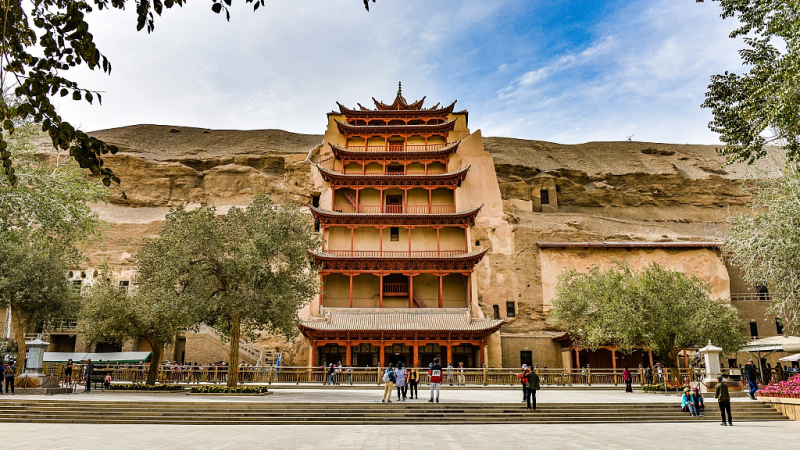
Source: news.cgtn.com 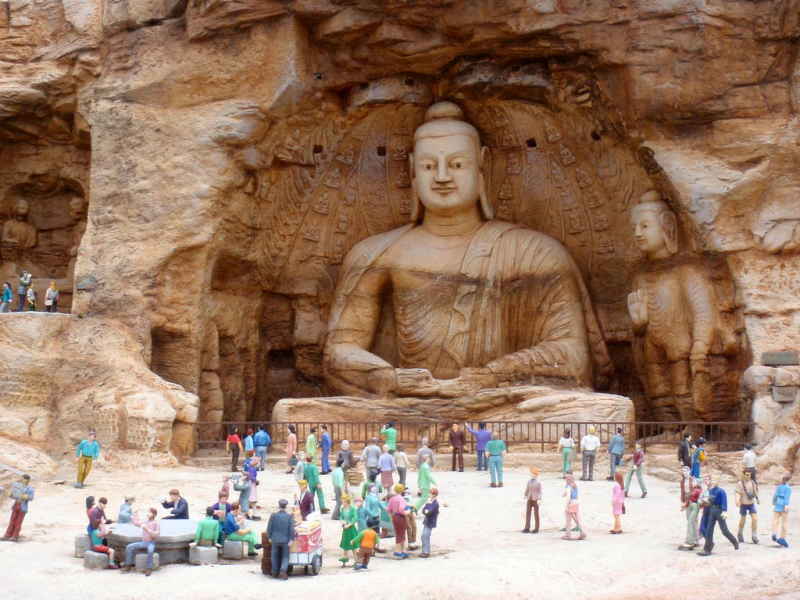
Source: mapsofworld -
The Confucius Temple, the Confucius Cemetery, and the Confucius Family Mansion are The Three Confucius Sites in Qufu, a county-level city in Jining, Shandong province, East China. In 1994, they were designated as World Cultural Heritage Sites. During festivals and important events, the Confucius Temple is a venue to pay homage to god and ancestors. It was built around 478 BC and has since been expanded several times. The complex presently spans 218,000 square meters, with almost 460 chambers constructed by several dynasties. The temple at Qufu is the inspiration for numerous Confucius temples throughout East and Southeast Asia.
The Confucius Cemetery is China's oldest and largest family cemetery. The cemetery contains the tombs of Confucius, a prominent ancient Chinese philosopher and educator, and his ancestors. A number of stone tablets with inscriptions engraved by renowned calligraphers like Li Dongyang and Kang Youwei may also be found in the cemetery. On the eastern side of the Confucius Temple lies the Confucius Family Mansion, which began building in 1377. It is the mansion of Confucius' descendants' eldest sons, with more than 480 rooms across 160,000 square meters.
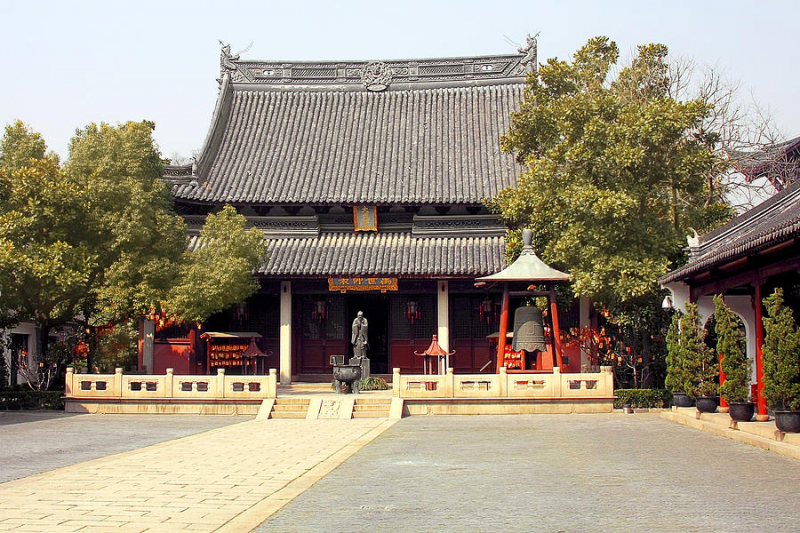
Source: fineartamerica 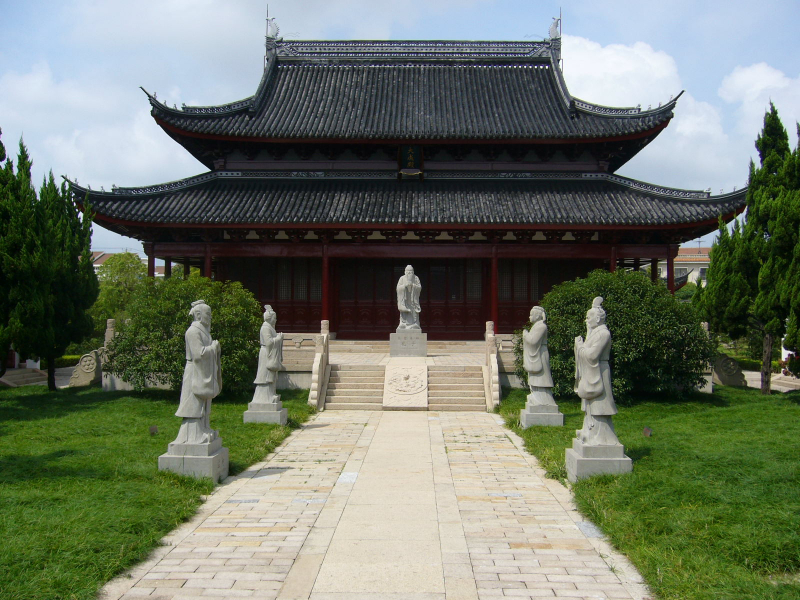
Source: wikimedia









